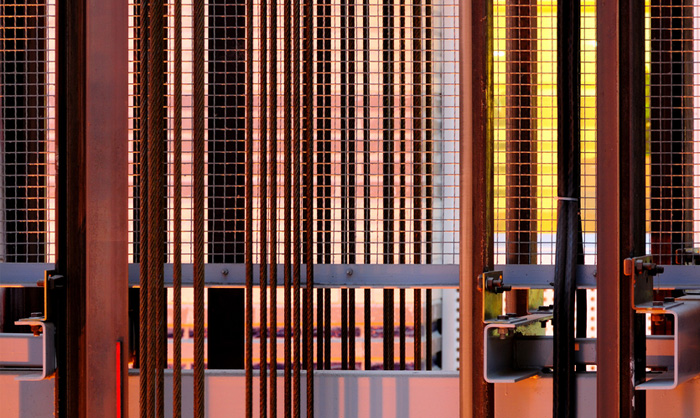According to How Stuff Works, the most popular elevator design is the roped elevator, where the car is raised and lowered by steel ropes instead of being pushed from below. Essentially, the ropes are attached to an elevator car, looping around a sheave, which is essentially a grooved pulley. The sheave then grips the hoist ropes so that they move when the sheave is rotated. There are many different types of elevator ropes.

Below are a few different kinds of elevator ropes:
- Hoist: These types of ropes are designed to support and move the car and counterweight. High-strength hoist ropes are necessary in today’s high-rise elevators due to increased car speeds. The grade of steel you choose, such as extra high strength traction, will depend on load requirements and speed. For example, sometimes traction grade wire ropes are better than extra high strength because they have a higher fatigue life.
- Governor: Governors activate safety systems in case the elevator car moves too quickly, usually in regards to a rapid descent. This type of system is constructed around a governor sheave with a weighted one at the shaft’s bottom. The rope connects to the car, which moves up or down. When the car gains speed, the governor does too. However, if the speed becomes too great, centrifugal force pushes the flyweights outward against the spring. The ends of the flyweights will then hook onto the ratchets to stop the governor thanks to a movable actuator arm that eventually tells the brakes what to do.
- Compensating: These are used in conjunction with hoist ropes, suspended from below the car and below the counterweight. Frequently used on high-rise elevators (100 feet or great), compensating ropes work to offset the weight imbalance that happens when a lot of hoist rope is on the car side or on the counterweight side. No matter where the car is in the hoistway, this equal distribution is critical in maintaining balance between the two. One end of the compensating rope attaches to the bottom of the sling while the other attaches to the bottom of the counterweight frame.
No matter which type of elevator rope is used, it’s important to ensure ropes are in accordance with the elevator manufacturer’s specifications. That’s why you need a professional on your side to ensure quality. Call Mowrey Elevator to learn more about the rope systems we use in all our products. We are proud to be a family-owned company with several hundred employees committed to customer excellence across many service center locations.
Contact a sales representative at 1-800-441-4449 x117 or fill out our online form for more information.
